 Yes, today this blog celebrates its 8th anniversary – it’s hard to believe that I’ve been doing this for such a long time…
Yes, today this blog celebrates its 8th anniversary – it’s hard to believe that I’ve been doing this for such a long time…
Much has happened in the Space Elevator field since I first began my missives. In no particular order they are:
 The Space Elevator Games – this joint venture between NASA and the Spaceward Foundation created lots of interest in the power-beaming and strong-tether technologies over its many year run. Games were held in California (Mountain View and Mojave), New Mexico and Utah and produced a winner (Lasermotive) that took home $900,000. It’s unfortunate that NASA didn’t renew the contract, but they have other ‘fish to fry’ these days. However, it’s good to know that there are still organizations and groups trying to push the boundary of power-beaming. For example, the Kansas City Space Pirates recently set an unofficial record for beam-powered flight.
The Space Elevator Games – this joint venture between NASA and the Spaceward Foundation created lots of interest in the power-beaming and strong-tether technologies over its many year run. Games were held in California (Mountain View and Mojave), New Mexico and Utah and produced a winner (Lasermotive) that took home $900,000. It’s unfortunate that NASA didn’t renew the contract, but they have other ‘fish to fry’ these days. However, it’s good to know that there are still organizations and groups trying to push the boundary of power-beaming. For example, the Kansas City Space Pirates recently set an unofficial record for beam-powered flight.
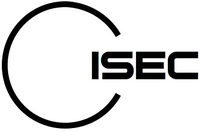 The birth of the International Space Elevator Consortium (ISEC). This organization began in 2008 and, after a rough first year, has found its way. I was privileged to be its President for four years and it is now in the capable hands of Dr. Peter Swan. This organization has taken up sponsorship of the American Space Elevator Conference, produces year-long studies on various aspects of Space Elevator Technology and also CLIMB, the Space Elevator Journal. Recently, ISEC created the Space Elevator Research and History Committees to further knowledge in this field. And hey, lets not forget the posters ISEC creates too…
The birth of the International Space Elevator Consortium (ISEC). This organization began in 2008 and, after a rough first year, has found its way. I was privileged to be its President for four years and it is now in the capable hands of Dr. Peter Swan. This organization has taken up sponsorship of the American Space Elevator Conference, produces year-long studies on various aspects of Space Elevator Technology and also CLIMB, the Space Elevator Journal. Recently, ISEC created the Space Elevator Research and History Committees to further knowledge in this field. And hey, lets not forget the posters ISEC creates too…
 The birth of the Japan Space Elevator Association (JSEA). This very active group holds a conference every year and hosts multiple competitions too. They have an active website and lots of members and are group of very good, committed people.
The birth of the Japan Space Elevator Association (JSEA). This very active group holds a conference every year and hosts multiple competitions too. They have an active website and lots of members and are group of very good, committed people.
 The Space Elevator Conferences. The American ones were originally hosted by the SESI organization and have now, as noted in a previous item, been taken over by ISEC. During the past few conferences, we’ve had luminaries such as Yuri Artsutanov and Jerome Pearson attend and give Keynote speeches and this year’s conference will be very exciting too, I’m sure. JSEA also hosts conferences in Japan each year and EuroSpaceward (apparently not active anymore, unfortunately) has hosted a few conferences in Europe where Space Elevator Technology and Research has played a central role.
The Space Elevator Conferences. The American ones were originally hosted by the SESI organization and have now, as noted in a previous item, been taken over by ISEC. During the past few conferences, we’ve had luminaries such as Yuri Artsutanov and Jerome Pearson attend and give Keynote speeches and this year’s conference will be very exciting too, I’m sure. JSEA also hosts conferences in Japan each year and EuroSpaceward (apparently not active anymore, unfortunately) has hosted a few conferences in Europe where Space Elevator Technology and Research has played a central role.
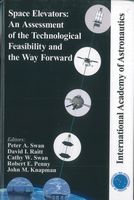 The International Academy of Astronautics released a report about Space Elevators (An Assessment of the Technological Feasibility and the Way Forward), the first comprehensive study of Space Elevators since Brad Edwards and Eric Westling’s seminal publication in 2002. This report has been just recently published and has received a lot of Press coverage.
The International Academy of Astronautics released a report about Space Elevators (An Assessment of the Technological Feasibility and the Way Forward), the first comprehensive study of Space Elevators since Brad Edwards and Eric Westling’s seminal publication in 2002. This report has been just recently published and has received a lot of Press coverage.
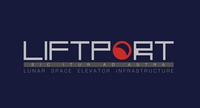 We’ve seen the growth and demise and then subsequent rebirth of LiftPort. They are now concentrating their efforts on building a Lunar space elevator. They were able to host a very successful Kickstarter campaign and raised a lot of money for their efforts.
We’ve seen the growth and demise and then subsequent rebirth of LiftPort. They are now concentrating their efforts on building a Lunar space elevator. They were able to host a very successful Kickstarter campaign and raised a lot of money for their efforts.
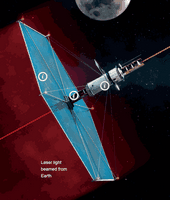 While the Space Elevator is a familiar concept in Japan (Gundam rocks!), publicity about this enterprise is growing in the western world too. There have been articles published about the Space Elevator in such world-wide publications as the National Geographic Magazine (both online and in print) and a Google Search on “Space Elevator” will now turn up hundreds and hundreds of hits of articles about this concept. Also, several fictional and non-fictional books about the Space Elevator (or with the Space Elevator as a backdrop) have been published. The idea of a Space Elevator is no longer a strange concept and I’m hopeful that this blog has had some small part to play in that.
While the Space Elevator is a familiar concept in Japan (Gundam rocks!), publicity about this enterprise is growing in the western world too. There have been articles published about the Space Elevator in such world-wide publications as the National Geographic Magazine (both online and in print) and a Google Search on “Space Elevator” will now turn up hundreds and hundreds of hits of articles about this concept. Also, several fictional and non-fictional books about the Space Elevator (or with the Space Elevator as a backdrop) have been published. The idea of a Space Elevator is no longer a strange concept and I’m hopeful that this blog has had some small part to play in that.
There have been many other developments in the Space Elevator field over this past eight years, too numerous to list here. I’ve highlighted major ones (IMHO) in my previous anniversary blogs: Year 1, Year 2, Year 3, Year 4, Year 5 and Year 6. No posting, sadly, for Year 7.
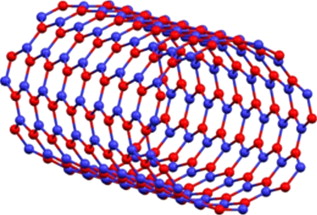 While all of this is good and exciting, we continue to wait for science & engineering to come up with the material strong enough to construct an earth-based Space Elevator tether. Research in the Carbon Nanotube tensile-strength field has not made the progress that many of us had hoped for by now, but on the grand scale of things, we’re still in the ‘early innings’ of this project. And research is now proceeding with a second material theoretically strong enough to build an earth-based Space Elevator tether from, Boron Nitride nanotubes. Options are good things!
While all of this is good and exciting, we continue to wait for science & engineering to come up with the material strong enough to construct an earth-based Space Elevator tether. Research in the Carbon Nanotube tensile-strength field has not made the progress that many of us had hoped for by now, but on the grand scale of things, we’re still in the ‘early innings’ of this project. And research is now proceeding with a second material theoretically strong enough to build an earth-based Space Elevator tether from, Boron Nitride nanotubes. Options are good things!
My faithful readers over the past several years have noted, I’m sure, this blog’s change in focus from “all-things Space Elevator” to “all-things ISEC”. This wasn’t deliberate, but was rather a side-effect of my being president of that organization for four years. Now that I’m no longer president (but I’m still very much involved as a Director and being in charge of publicity), the focus of this blog is returning to “all-things Space Elevator”.
So, thank you for reading and onward and upward!
 The April, 2014 ISEC eNewsletter is hot off the presses and has been sent to all of ISEC’s subscribers. Lots of good stuff in this issue, mostly about the upcoming ISEC Space Elevator Conference. This includes a reminder Call for Papers for the Conference, notice that Registration is now OPEN and, a special announcement about the Keynote Speaker.
The April, 2014 ISEC eNewsletter is hot off the presses and has been sent to all of ISEC’s subscribers. Lots of good stuff in this issue, mostly about the upcoming ISEC Space Elevator Conference. This includes a reminder Call for Papers for the Conference, notice that Registration is now OPEN and, a special announcement about the Keynote Speaker. ISEC is very pleased to announce that long-time science writer Leonard David will be giving the Keynote speech at the conference. I’ve read (and linked to his writings) for many years now and look forward to a) hearing what he has to say and b) finally being able to meet him. His list of accomplishments, writings and awards is too long to list here – check out the April eNewsletter for a partial list.
ISEC is very pleased to announce that long-time science writer Leonard David will be giving the Keynote speech at the conference. I’ve read (and linked to his writings) for many years now and look forward to a) hearing what he has to say and b) finally being able to meet him. His list of accomplishments, writings and awards is too long to list here – check out the April eNewsletter for a partial list.
 An
An  An article that has been making the rounds recently seems to confirm that GoogleX, once upon a time, was interested in building a Space Elevator. This story has been reported in several outlets but they all seem to come from
An article that has been making the rounds recently seems to confirm that GoogleX, once upon a time, was interested in building a Space Elevator. This story has been reported in several outlets but they all seem to come from  Registration is now
Registration is now  Yes, today this blog celebrates its 8th anniversary – it’s hard to believe that I’ve been doing this for such a long time…
Yes, today this blog celebrates its 8th anniversary – it’s hard to believe that I’ve been doing this for such a long time… The Space Elevator Games
The Space Elevator Games The birth of the
The birth of the  The birth of the
The birth of the 
 The International Academy of Astronautics released a report about Space Elevators (
The International Academy of Astronautics released a report about Space Elevators ( We’ve seen the growth and demise and then subsequent rebirth of
We’ve seen the growth and demise and then subsequent rebirth of  While the Space Elevator is a familiar concept in Japan (
While the Space Elevator is a familiar concept in Japan ( While all of this is good and exciting, we continue to wait for science & engineering to come up with the material strong enough to construct an earth-based Space Elevator tether. Research in the Carbon Nanotube tensile-strength field has not made the progress that many of us had hoped for by now, but on the grand scale of things, we’re still in the ‘early innings’ of this project. And research is now proceeding with a second material theoretically strong enough to build an earth-based Space Elevator tether from, Boron Nitride nanotubes. Options are good things!
While all of this is good and exciting, we continue to wait for science & engineering to come up with the material strong enough to construct an earth-based Space Elevator tether. Research in the Carbon Nanotube tensile-strength field has not made the progress that many of us had hoped for by now, but on the grand scale of things, we’re still in the ‘early innings’ of this project. And research is now proceeding with a second material theoretically strong enough to build an earth-based Space Elevator tether from, Boron Nitride nanotubes. Options are good things!